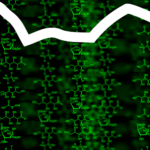Link to Pubmed [PMID] – 38037131
Link to DOI – 10.1186/s13059-023-03098-2
Genome Biol 2023 Nov; 24(1): 274
As a single reference genome cannot possibly represent all the variation present across human individuals, pangenome graphs have been introduced to incorporate population diversity within a wide range of genomic analyses. Several data structures have been proposed for representing collections of genomes as pangenomes, in particular graphs.In this work, we collect all publicly available high-quality human haplotypes and construct the largest human pangenome graphs to date, incorporating 52 individuals in addition to two synthetic references (CHM13 and GRCh38). We build variation graphs and de Bruijn graphs of this collection using five of the state-of-the-art tools: Bifrost, mdbg, Minigraph, Minigraph-Cactus and pggb. We examine differences in the way each of these tools represents variations between input sequences, both in terms of overall graph structure and representation of specific genetic loci.This work sheds light on key differences between pangenome graph representations, informing end-users on how to select the most appropriate graph type for their application.






